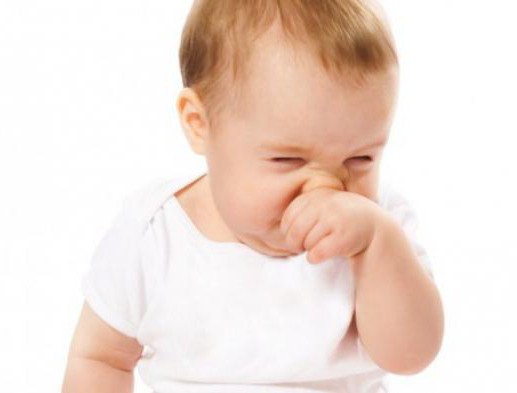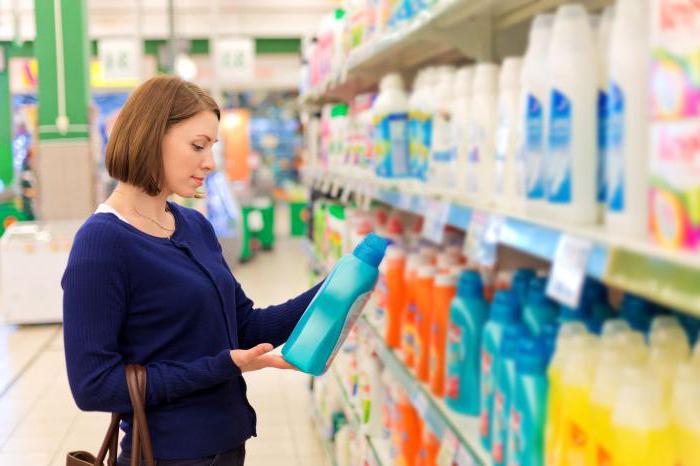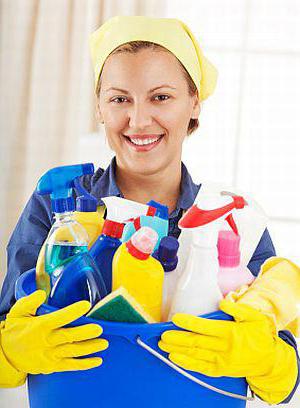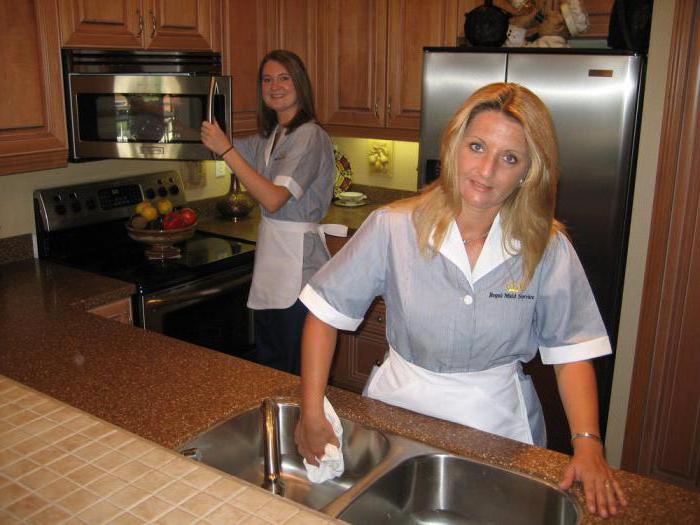Maintaining cleanliness and order has become part of our lives. Any housewife wants her house to be clean, then the person himself is more pleasant and comfortable at home. And if we are talking about the industrial premises of the food industry, then this is a matter of safety and quality of products. In healthcare and educational institutions, cleanliness is the key to our health and the health of our children and relatives. Cleanliness is not only beauty, but also the basis of life and security.
The procedure for establishing standards for detergents
Standards for the consumption of detergents and cleaning products are necessary for their effective and rational use.
Any organization sets the consumption rates of detergents independently based on the real need for them. These standards are established by a specially created commission for this, consisting of officials responsible for the sanitary condition of the premises.

When developing standards for detergents, you can be guided by the Order of the Ministry of Health and Social. of the development of the Russian Federation of December 17, 2010 No. 1122 n. This document regulates the norms for issuing personal products for washing and neutralizing, depending on the type of work performed.
When approving the consumption rates of detergents, it is advisable to use the actual data on the consumption of a specific product, technical calculations, as well as the manufacturer's instructions on the consumption rates of the product.
Detergent consumption rates
The table shows an example of the consumption rates of cleaning products that the Russian Judicial Department has developed for itself.
Name of facility | Detergent consumption rates in kg per month | |
Office space | Industrial premises | |
Washing powder | 0,5 | 1 |
Toilet soap | 0,2 | 0,2 |
Cleaner for one washbasin, toilet, urinal, bidet | 0,2 | 0,2 |
Chlorine, Chloramine | 0,2 | 0,2 |
Washing powder for washing windows | 0.1 kg per 10 m2 | 0.1 kg per 10 m2 |
Washing powder for washing elevators | 0,12 | 0,12 |
Detergent "Second" for elevators | 0,16 | 0,16 |
Laundry soap | 0,25 | 0,25 |
An example of a detergent consumption rate in a hotel
In order to determine the approximate flow rate, you can use the table below.
Name of facility | Norm per month |
Tools for ceramics, porcelain, glazed surfaces | |
"Standard", "Duckling", "Silit", "Domestos" and others. | 2.457 ml per 1 m2 areas of bathrooms 775-802 ml per washbasin, toilet, 1240 ml per bath 915 ml per bidet, 509 ml per urinal |
"White" | 4.832 ml per 1 m2 areas of bathrooms |
Pemolux, Chance, Oksibor | 2.005 g per 1 m2 the area of ordinary floors or bathrooms, 410 g per toilet, washbasin or tray, 953 g per bath |
Soda ash | 60 g per 1 m2 floor area or bathrooms |
Bleaching powder | 36 g per wash 1 m2 floors of bathrooms 21 g per washbasin, toilet, tray, urinal, 210 g per bath 32 g per bidet |
Consumption rates of soaps and detergents for universal use | |
Washing powder | 4.946 g per wash 1 m2 floors of rooms and bathrooms |
Laundry soap | 0.72 g per wash 1 m2 painted parts of windows, doors, walls, floors |
Means "Ideal", "Pemoxol" | 2.005 g per wash 1 m2 floors of rooms and bathrooms, 410 g per washbasin, drip tray, 953 g per bath |
Means "Pearls", "Progress" | 2.873 ml per 1 m wash2 painted parts of windows, doors, walls, floors |
Specialized Cleaning Products | |
Means for cleaning pipes "Mole" | 200 ml per wash basin, bathtub, bidet, tray, 300 ml per toilet |
Sigma descaler | 800 ml per electric kettle |
Means for ware "Vicksan", "Mila" | 0.7 ml for washing one item of dishes, 2.82 ml for washing one refrigerator |
Calcium detergent in Calgon washing machines | 37 g for washing 1 kg of laundry |
Carpet Products | |
"Carpet", "Carpet Cleaner" | 400 ml per 1 m2 for manual cleaning, 48 ml per 1 m2 for machine cleaning |
"Bingola Carpet" | 30 ml per 1 m2 |
Tools for mirrors, glass, crystal, windows | |
“Bingosil”, “Second”, “Mig”, | 1.94 ml per 1 m2 glass surfaces and mirrors, 1.68 ml per 1 m wash2 window panes |
Documenting
After the commission has carried out work to determine the standards for each product, the organization issues an order for the consumption rates of detergents with specific numbers for specific items.
The norm for the product is indicated in milliliters, if it is a liquid or gel. If the product is powdered or solid, then the norm is set in grams on it. It is also necessary to indicate how much work this norm is established. It may be 1 m2 floor or window panes, one piece of plumbing (toilet, bathtub, etc.), the number of items of dishes.
The second version of the norms for the consumption of detergents for cleaning is a specific amount of detergents for a certain time period, for example a week, a month, several months.

Principles for determining the standards for detergents for kindergartens, schools
As in all organizations, the consumption rates of detergents in budgetary institutions are independently developed and approved by them.
The legislation does not provide specific regulations in this area. It defines only specific requirements for the cleanliness and sanitary condition of the premises and objects of use. What and how much to use, determines the garden or school, the main thing is to be clean.
On the other hand, budget organizations use budget funds. Therefore, costs should be rational and economical. And when establishing the consumption rates of detergents for cleaning rooms, bathrooms and other purposes, they should be as effective as possible, but also quite economical.
Detergents for kindergartens
The main detergents for kindergartens are detergents for mopping, plumbing, utensils, toys, cleaning the food unit and washing bedding.
An example of a detergent consumption rate in kindergarten can be seen in the following table. Such nomes were approved for themselves by one of the Russian kindergartens.
Name of facility | Consumption rate for one group of pupils |
Carpet Cleaner | 3 pack in year |
Laundry soap 170-200 g | 2 pcs. per month |
Disinfectant "Domestos", 1 l | 1 pack per month |
Means for flooring "Glorix", 1 l | 1 pack per month |
Glass cleaner “Mr. Muscle”, 0.5 L | 1 pack per month |
Means for plumbing "Sanoks", "Sanitary" and others., 0.75 l | 1 pack for 2 months |
Powder-based detergent "Pemolux", 400 g | 1 pack per month |
Liquid soap for children, 300 ml | 12 packs per month |
Dishwashing liquid, 500 ml | 4 packs per month |
School Cleaning Product Standards
As for schools, they require approximately the same cleaning products as for kindergartens. The standards for the consumption of detergents in schools are also approved individually by the institution.
When cleaning educational institutions, detergents for floors, toilets and washbasins, windows, walls, doors, furniture, appliances are used. There should also be soap on the sinks.

The harm and benefits of detergents
Many of us know that household chemicals and a variety of effective detergents, powders, gels harm the health of people and especially children.
Before buying a new bottle or bag, read the contents of this product.
Chlorine is harmful and adversely affects hair, skin and nails. It can also provoke heart muscle disease, high blood pressure, allergies and asthma.
Chlorine is usually found in bleaches.
Phosphates also have harmful effects on human health. May cause allergies and asthma. They are found in large quantities in washing powders.
Surfactants can affect the internal organs, brain, weaken the immune system.They are also found in detergents and dishwashing detergents.

Modern Natural Detergents
Today, the market offers environmental cleaning products that incorporate organic components. They are not harmful to human health and cope well with the tasks of cleaning, washing and cleaning.
Naturally, the cost of such natural products will be higher than synthetic ones. If the organization is not budgetary and does not pursue the goal of saving on everything, then for it the use of natural cleaning products can do a good job.
For example, private educational or medical institutions, using natural detergents, can position themselves so that they take care and love of the health and safety of their clients or students.
Dishwashing Detergent Market
Each mistress has her own specific means, with which she is satisfied, and she takes it without hesitation.
AOS is a synthetic detergent. Mistresses speak of him as very economical, efficient. Cope with fat and in cold water. Does not cause dry hands.
Frosch is marketed as a natural product based on surfactants of natural origin. Foams a little worse than the first remedy, but copes with the task well.
Fairy is the most powerful dishwashing detergent. Washes fat better than anyone. It is washed off the dishes worse than AOS, and it has less foam. He also dries the skin on his hands a little.
Organic people is positioned as a completely natural remedy. But it costs 2-3 times more expensive than previous funds. Designed for normal contamination, can not cope with highly burnt dishes. Can be used to wash children's toys, items of use. It has a convenient dispenser, the same as that of jars with liquid soap.
The Eared Nanny contains a reduced level of surfactant. Dye-free; odor not sharp. Excellently launders fat.
Sorti is the cheapest dishwashing detergent. Washes well, does not dry hands. More fluid compared to previous ones.
Laundry Detergent Market
Sarma active has a low cost. It is spent economically, effectively copes with various pollution. But it has a rather aggressive composition.
Ariel cleans stains well and is economical. It is above average, can cause allergies.
Frosch is positioned as a powder of natural ingredients. Washes well, economical. But it costs more than competitors.
"Eared nannies" has a rather aggressive chemical composition, it can not be called baby powder. But it copes with pollution perfectly. Packing of different volumes.
Bimax removes very complex and persistent dirt. He is not cheap.
An assortment of popular toilet cleaners
Cillit Bang well removes lime and rust from the surface of the toilet, economical. It is quite expensive.
Domestos has a gel structure, removes dirt well. But it has an unpleasant smell of chlorine.
"Comet 7 days of purity" removes dirt well, is inexpensive. But it has a pungent smell.
"Toilet duckling" copes well with pollution, low cost, high consumption.
"Sanfor" is inexpensive, can be used to clean the floor, tiles. It has a pungent smell of chlorine and can not cope with old pollution.
Means for washing bathtubs and sinks
Cillit Bang can be used both for a bathtub and for a tile, a floor, a toilet bowl. Its composition is quite aggressive, you need to work with it with gloves. Qualitatively removes rust and lime. It has an unpleasant odor.
"Buggy Aktilan" is suitable for washing acrylic and enameled bathtubs, tiles, toilet bowls. It acts quickly and efficiently. But it is quite expensive and has an unpleasant smell.
Frosch consists of natural ingredients, cleans well, has a very pleasant and fresh aroma. But it does not cope with severe pollution and is expensive.
Cif has the ability to whiten the bath, an affordable price level.But it does not cope with persistent lime pollution.
"Sanox gel" copes with the most difficult pollution. It is quite cheap, but with frequent use it can ruin the surface of the bath.

Good old detergents
The means that our grandmothers used were also good detergents.
Laundry soap can be used both for washing and for washing dishes, floors, plumbing. Soaping a sponge with laundry soap and using warm water, you can wash a greasy pan or pan. It can also be used instead of washing powder.
Soda is also a good dishwashing detergent, plumbing. Perfectly launders porcelain plates, mugs, cleans pots, pans. It is good to use it for washing bathtubs, sinks, toilets.
Soda ash is also intended for cleaning plumbing, floors, washing stoves, plumbing.
The biggest advantages of these good old detergents are their low cost and environmental safety. They can be safely used in a house where allergy sufferers and young children live. But it is a pity that they can not fully cope with strong pollution, such as lime deposits, rust.
The use of cleaning and detergents is a necessary need in our lives. When setting the standards for the consumption of soap and detergents in the organization, follow the manufacturer's instructions, as well as the real need for them to achieve the required level of purity.
If you have the right to choose detergents for your organization, then look for a middle ground between the effectiveness and safety of these products.

